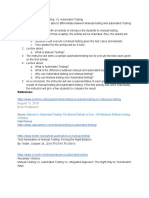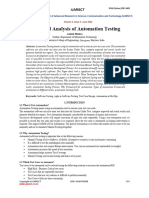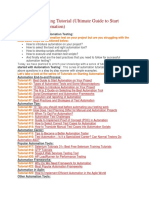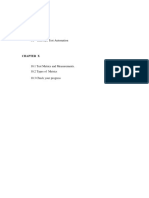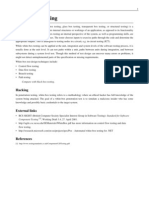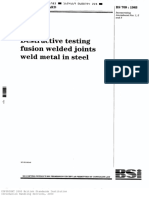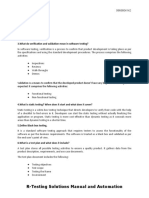0% found this document useful (0 votes)
9 views5 pagesSoftware Testing Help Logo 1
The document discusses the differences between Manual Testing and Automation Testing, highlighting their respective processes, advantages, and limitations. It explains when to use each type of testing, providing scenarios for both Automation and Manual Testing, as well as types of testing that can be performed using either method. Ultimately, it emphasizes that the choice between Manual and Automation Testing depends on project requirements, time, and budget considerations.
Uploaded by
Fakhra MalikCopyright
© © All Rights Reserved
We take content rights seriously. If you suspect this is your content, claim it here.
Available Formats
Download as DOCX, PDF, TXT or read online on Scribd
0% found this document useful (0 votes)
9 views5 pagesSoftware Testing Help Logo 1
The document discusses the differences between Manual Testing and Automation Testing, highlighting their respective processes, advantages, and limitations. It explains when to use each type of testing, providing scenarios for both Automation and Manual Testing, as well as types of testing that can be performed using either method. Ultimately, it emphasizes that the choice between Manual and Automation Testing depends on project requirements, time, and budget considerations.
Uploaded by
Fakhra MalikCopyright
© © All Rights Reserved
We take content rights seriously. If you suspect this is your content, claim it here.
Available Formats
Download as DOCX, PDF, TXT or read online on Scribd
/ 5





